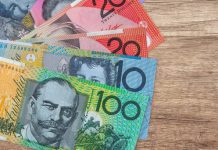The British pound has posted considerable gains in the Wednesday session. In North American trade, GBP/USD is up 0.94%, trading at 1.2730. BoE Governor Mark Carney addressed the ECB Forum of Central Bankers, and British Nationwide HPI jumped 1.1%. In the US, Pending Home Sales declined 0.8%, well short of the forecast of +0.9%. On Thursday, the US releases Final GDP and unemployment claims.
The markets continue to keep a close watch on events in Sintra, Portugal. The picturesque city is hosting the ECB Forum, as central bankers have stepped in as market-movers this week. On Tuesday, the euro posted strong gains after ECB President Mario Carney sounded upbeat about the eurozone economy and shrugged off concerns about low inflation. On Wednesday, it was BoE Governor Mark Carney’s turn in the limelight, as his comments have sent the pound higher. Carney said that the BoE would have to consider removing monetary stimulus, and the markets jumped on his comments as a possible sign that he was not adamantly opposed to rate hikes in the near future. BoE policymakers have waged a public debate about rate policy, with Carney stating last week that he was opposed to hikes, only to be contradicted by MPC member Ande Haldane, who said he had been close to voting in favor of a rate hike at the June rate meeting. The vote at the meeting was 5-3 in favor of maintaining rates, surprising the markets, which had predicted a 7-1 vote to keep rates at current levels. Although there are renewed fears that Brexit will take a toll on the British economy, inflation is running close to 3%, well above the BoE’s target of 2 percent. A rate increase would help lower inflation, but Carney, who has voiced concerns about Brexit’s negative ramifications since the vote last June, has been solidly against a rate increase.
Investors are awaiting the Final GDP report out of the US on Thursday, and a weaker reading than expected could have a chilling effect on the US dollar. Preliminary GDP, which was released in May, came in at 1.2%, and this is the estimate for the upcoming GDP report. Recent economic data has been softer than expected, notably construction and manufacturing reports. US durable goods releases were weak in May. Core Durable Goods broke a streak of two straight declines, but the weak gain of 0.1% missed expectations. Durable Goods declined 1.1%, its sharpest decline since June 2016. The slowdown in orders of business equipment could weigh on second quarter growth. Construction numbers have been mixed, and Pending Home Sales disappointed on Wednesday, posting a third straight decline in the May report.













